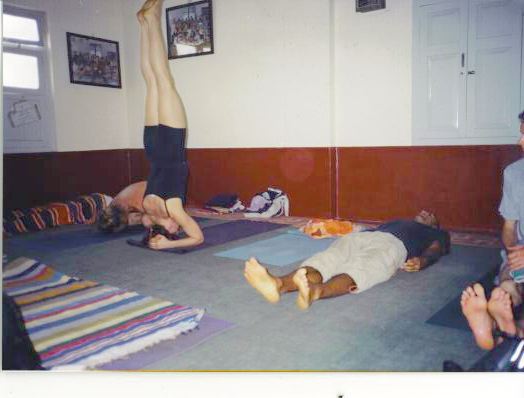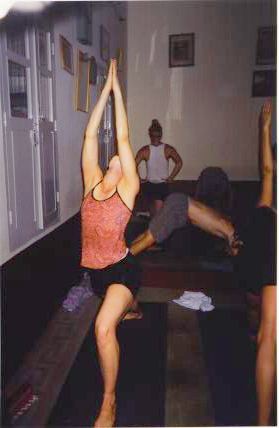'TIS THE SEASON...FOR CORN AND CORRUPTION(Summer in the Not-so-Bucolic Midwest)

I recently had lunch with Cousin L, who moved to the East Coast 25 years ago.
She said the first thing she does when she comes back home is load up on sweet corn.
It's what we do here all summer;
We eat inexpensive, locally-grown corn.
(Hence the term, corn-fed).
Recently, it was so sweet and fresh that the kernels were practically falling off the cob.
Dreyfus cooked it anyway.

And it was wonderful.
* * *
'TIS THE SEASON, PART III. Chicago is in a deep economic crisis and wants to privatize everything.The city is nearly bankrupt, and to raise cash the mayor is considering privatizing everything that hasn't already been privatized (they have already privatized the Chicago Skyway Bridge and all of the parking meters on all of the streets).
The mayor is considering privatizing Taste of Chicago, the City Auto Pound, and our [nonexistent] recycling - (which is already "done" by Waste Management).
According to
the Chicago Tribune article, "Daley provided no details on how much money the privatization efforts could fetch or how many city workers could lose their jobs. And observers noted all of the ideas Daley floated won't balance the budget. They wondered what else the mayor might put in play before presents his financial plan to the City Council in mid-October."
Now, if only they'd privatize the Mayor's Office.
Read more
here.
II. I've long stated that Chicago and Illinois are tamasic - and now even NPR agrees.Weekend Edition Saturday just aired a piece that said
Chicago and Illinois are the most corrupt city and state in the nation.
And even though the citizens know it, they keep voting the same people into office.
This is
tamas* - the quality of inertia!
From
the piece by David Schaper:
The chair of the political science department at the University of Illinois-Chicago, Dick Simpson, has as his area of expertise studying political corruption.
Simpson says there's no question about it, Illinois is indisputably the most corrupt state and Chicago is the most corrupt city in the nation. And he has some eye-popping figures to back up those claims.
"So far, we believe there have been since 1970 about 1,500 people convicted of public corruption. Most of them are public officials, either elected or appointed," he says. "They occur at all levels of government from suburban trustee to the governor of the state of Illinois.
Simpson, who served as a reform-minded alderman in Chicago in the 1970s, led the small but vocal opposition bloc to the machine led by late Mayor Richard J. Daley. He says the first corruption trial in Chicago took place in the 1860s, and they have continued ever since.
"At the most local level, the building inspector might take a $50 bill or a $100 bill to not write up a building violation. An alderman might take $500 for a zoning variance so you can build a high rise instead of a single-family house."
A case in point — while the Blagojevich trial was going on this summer in one courtroom in Chicago's Dirksen federal building, in another, former Chicago Alderman Ike Caruthers was sentenced for taking bribes from a developer in exchange for favorable zoning changes; something his father went to prison for when he was alderman nearly 30 years ago.
"Chicago politicians do not seem to be able to learn," Simpson says. "They repeat the same mistakes over and over."
In yet another courtroom, Al Sanchez, who served as Streets and Sanitation commissioner under current Mayor Richard M. Daley, was tried and convicted....
Simpson says voters here historically have accepted corruption as fact of life, so long as the garbage is picked up on time, streets are plowed and the potholes are filled....
..."The cost of corruption in dollars in Illinois is about $500 million a year."
III. People are leaving Illinois in droves due to bankruptcy and losing their homes - and no one is coming in to take their place.Mrs. Dreyfus works for a moving van rental company. The vans are in high demand by people who are moving out of state. But no one is moving back to Illinois. So the company must send teams of people to retrieve the trucks and bring them back home - so that more people can move out of Illinois.
At least we still have our sweet corn, internet and cable TV --
nice distractions that will keep us from doing anything about it.

----------------------------------------------------------------------------------------
*Tamas is a force which promotes darkness, death, destruction and ignorance, sloth, and resistance. The result of a tamas-dominated life is demerit by karma: demotion to a lower life-form. A tamasic life would be marked by laziness, irresponsibility, cheating, maliciousness, insensitivity, criticizing and finding fault, frustration, aimless living, lack of logical thinking or planning, and making excuses. Tamasic activities include overeating, oversleeping and/or the consumption of drugs and alcohol. (From Wikipedia)
All photos by CK and Dreyfus (c) 2010












